
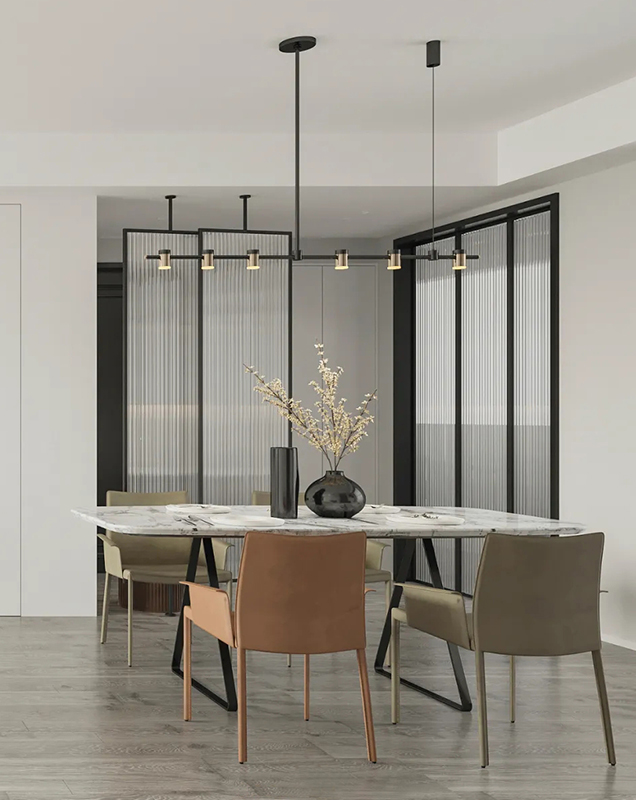
“解”的方式打破了原有(yǒu)昏暗的中(zhōng)軸空間,讓陽光照射到每個角落。“構”的方式在材質(zhì)上選擇鑒于“解”與“構”兩者之間,選用(yòng)了玻璃材質(zhì)。材料上利用(yòng)玻璃、鋼闆、木(mù)材、亞克力材質(zhì)的不同厚度體(tǐ)量和不同材質(zhì)的質(zhì)地對比反差,給空間層次一種“幹淨”、“細膩”的節奏感。嘗試着在保留原有(yǒu)空間結構方向的同時,找出新(xīn)的軸線(xiàn)關系,運用(yòng)軸線(xiàn)平移的方式使空間功能(néng)得到滿足。打破原有(yǒu)中(zhōng)軸空間,運用(yòng)軸線(xiàn)平移方式滿足空間功能(néng)
The "solution" method breaks the original dim central axis space, allowing sunlight to reach every corner. The way of "construction" is chosen in terms of material. In view of the difference between "solution" and "construction", glass material is chosen. In terms of materials, the different thicknesses of glass, steel plate, wood, and acrylic materials and the contrast of the texture of different materials are used to give the space a "clean" and "delicate" rhythm. Try to find a new axis relationship while preserving the original spatial structure direction, and use the axis translation method to satisfy the spatial function. Break the original central axis space and use the axis translation method to meet the space function
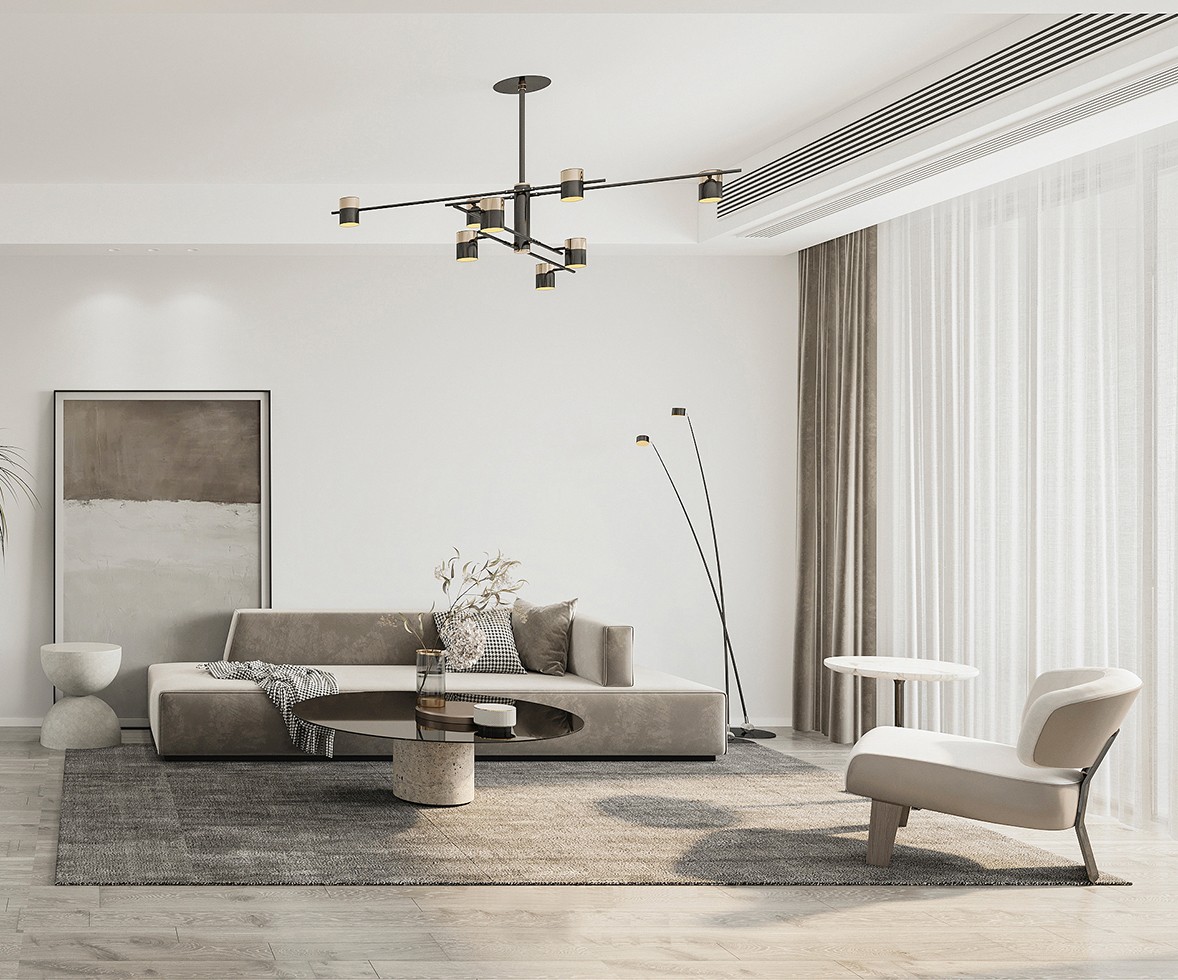
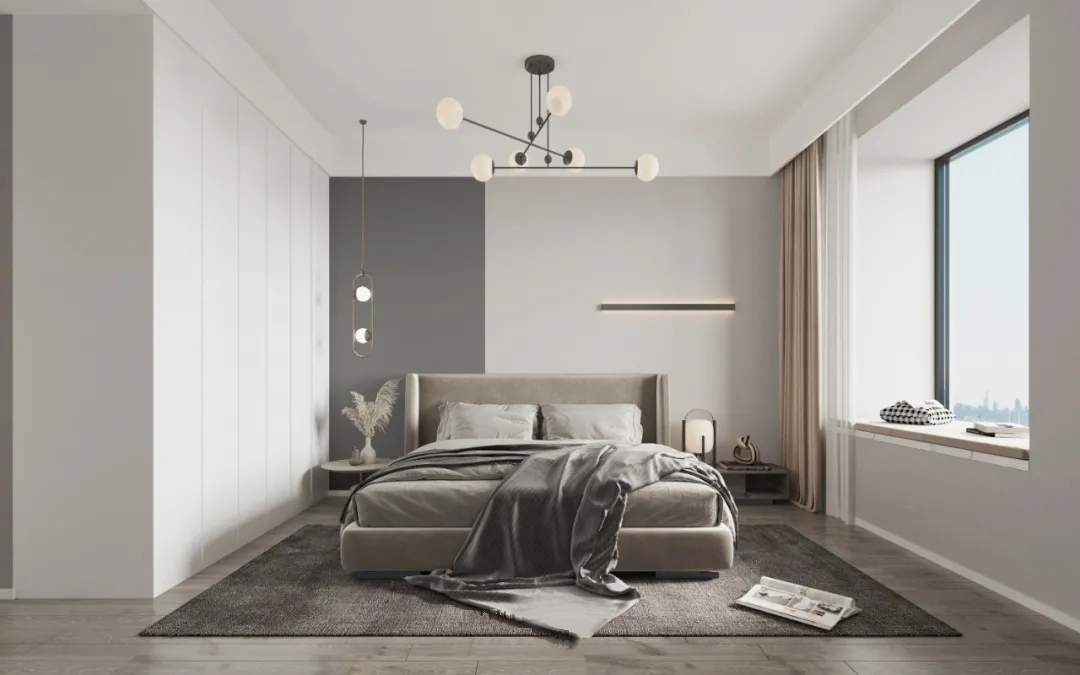
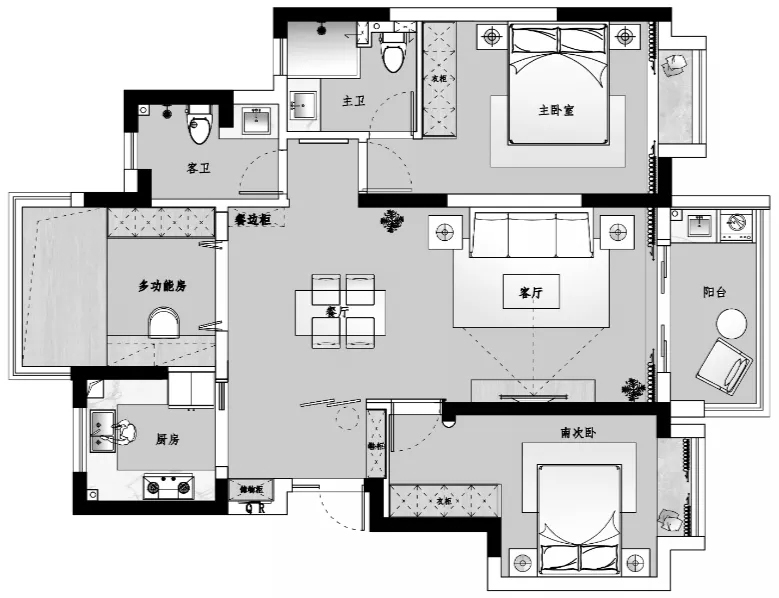
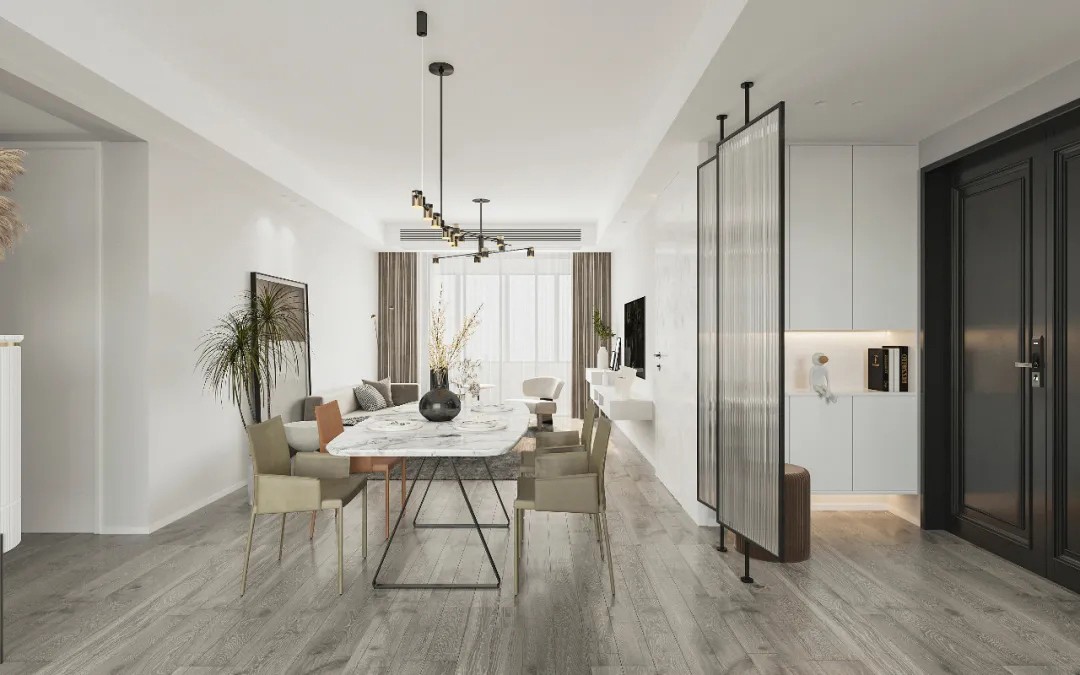
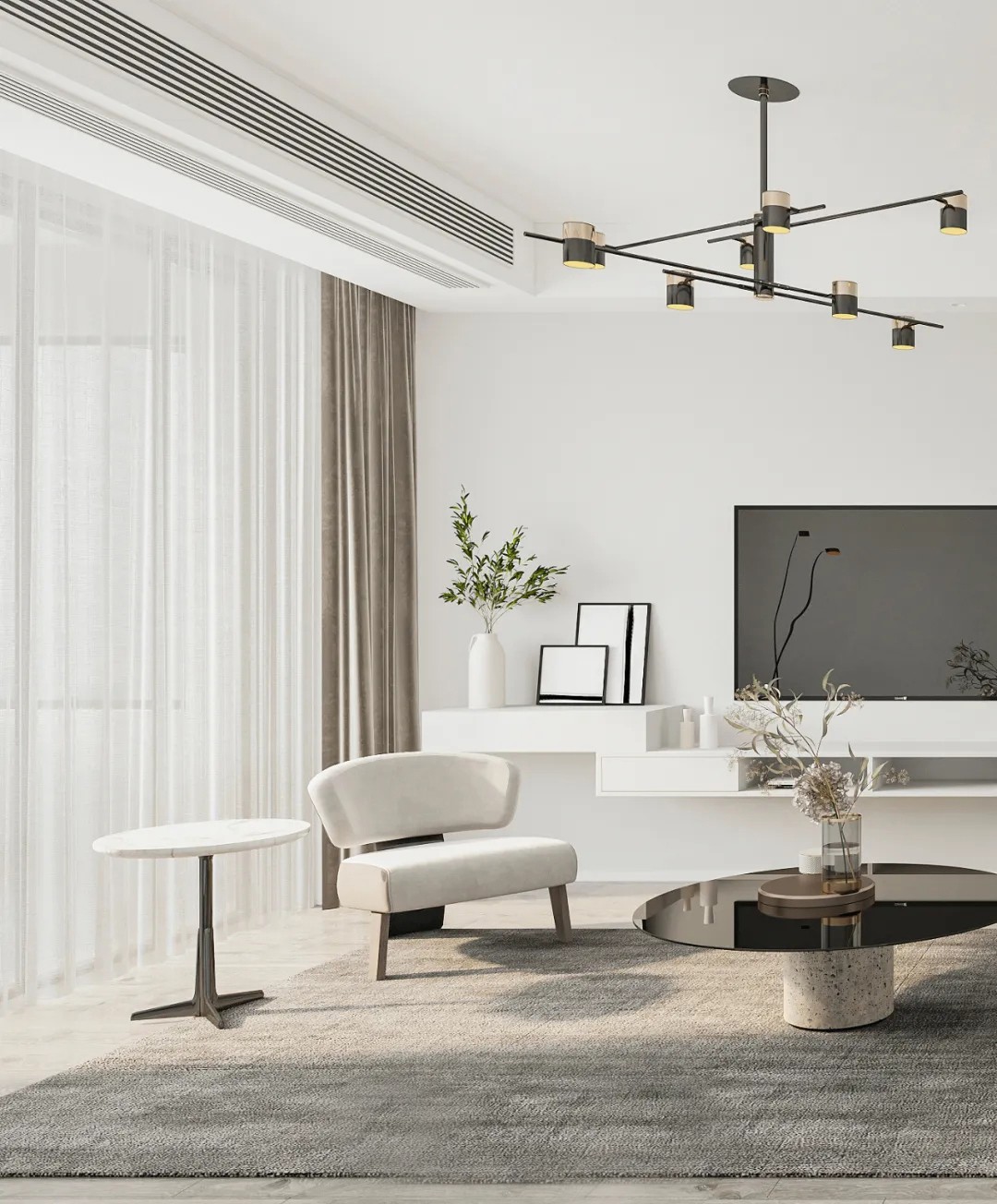
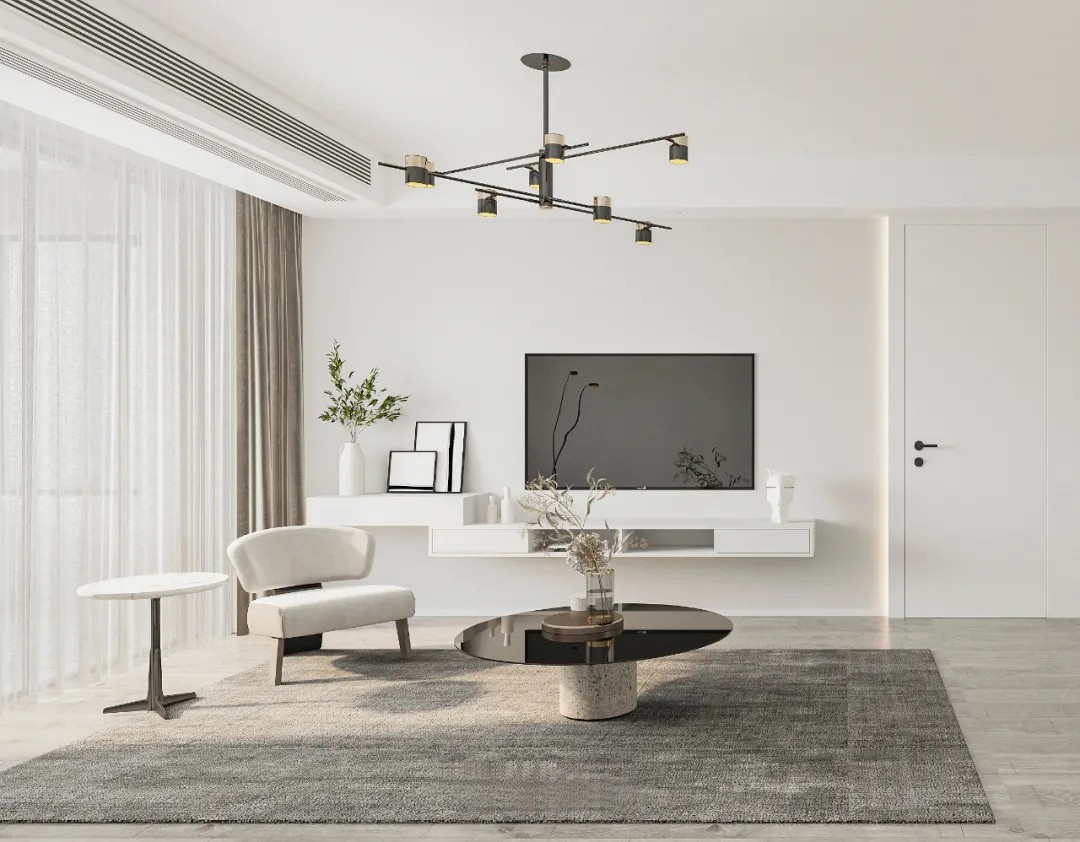
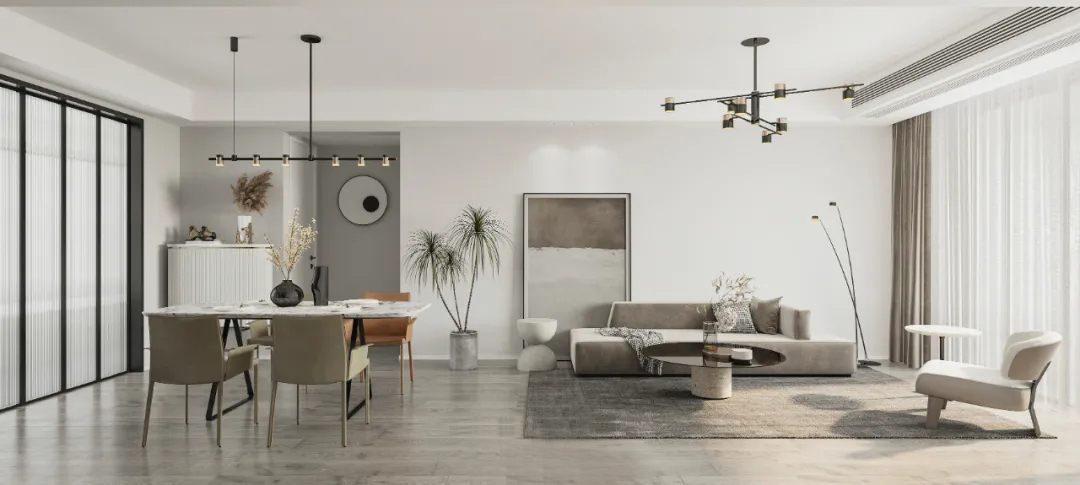
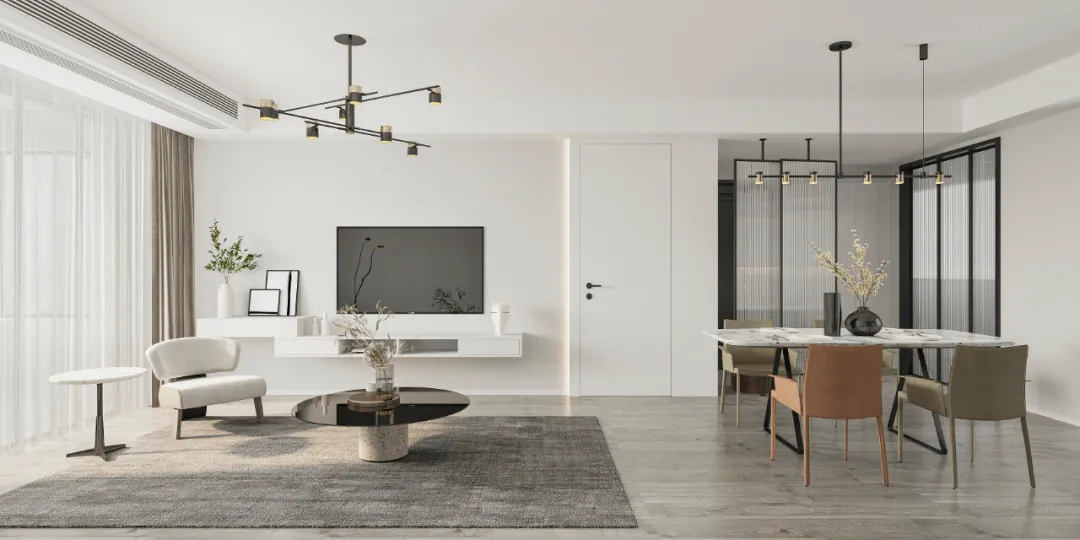
預約熱線(xiàn)131 5623 1025
預約熱線(xiàn) 131 5623 1025
